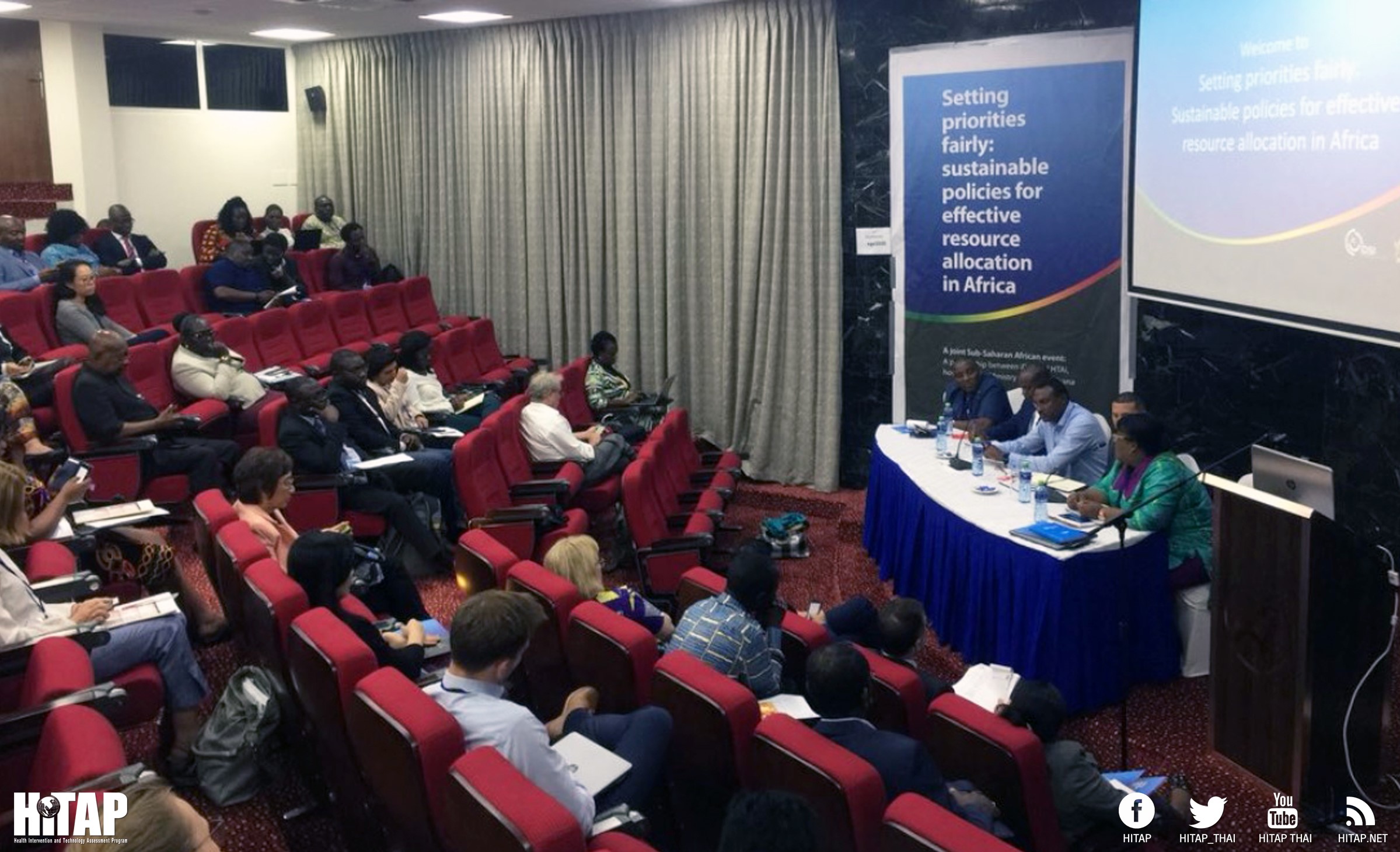Overcoming Barriers: Financing and Service Delivery for Vaccination in Fragile and Conflict-Affected States


How can countries build the systems that can deliver universal health coverage whilst juggling a whole host of challenges, constraints and demands?
The short answer? They need to make choices, smart choices that are built on careful and evidence-based priority setting practices.
This was the topic of the Setting Priorities Fairly: Sustainable Policies for Effective Resource Allocation conference that myself and Netnapis Suchonwanich were honoured to attend on 26th and 27th September in Accra, Ghana, on behalf of HITAP. Almost 100 delegates from around the world attended this global knowledge-sharing event hosted by the International Decision Support Initiative (iDSI), Health Technology Assessment international (HTAi), and the Ministry of Health Ghana, to discuss driving the priority-setting agenda forwards in Sub-Saharan Africa.
The pre-conference training workshops on the first day of the event introduced health technology assessment (HTA) as an appropriate tool for priority setting and provided a technical overview of the methods and guiding principles of HTA. Rebecca Addo, from the University of Sydney, described the main types of economic analysis used in HTA including cost-utility analysis (CUA), cost-benefit analysis (CBA) and cost-effectiveness analysis (CEA). The features of the latter were discussed in further detail.
Alex Winch, a health economist at iDSI, raised the significant issue of cost-effectiveness thresholds versus willingness-to-pay in his presentation and explained that a cost-effective intervention may not always present itself as affordable to a country. A discussion on performing budget impact analysis (BIA) alongside CEA followed.
Not only is it important that appropriate methodologies are utilised, but it is critical that HTA efforts are transparent and relevant in aim and scope, echoed the voices of key experts in the audience. If we want to integrate HTA evidence into policy and practice, the topic nominated for assessment needs to be policy-relevant and important to the decision-makers. A key discussion point was the need for countries to develop robust and explicit systems for translating HTA evidence into policy.
The second day got off to an exciting start with the opening remarks delivered by the Deputy Health Minister of the Ministry of Public Health, Ghana. The Minister talked about the momentum in Ghana for embedding HTA in decision-making to roll-out and sustain UHC. The Minister recognised the need for HTA being higher where resources are limited and therefore called for efforts to be made to build capacity for HTA in the region.

Sessions throughout the day centred on global experts sharing their HTA experiences in the region and beyond. Netnapis Suchonwanich, advisor at HITAP and former National Health Security Office’s deputy Secretary General, was asked to present on the formal structures of priority setting in the UHC scheme in Thailand. She remarked at how a transparent HTA process is Thailand gives legitimacy to the decision-making processes.
Countries need to identify priorities for resource allocation in a way that is fair, not leaving anyone behind. Netnapis touched upon equity considerations for HTA and discussed how an intervention may not be cost-effective but ethical aspects of the intervention may lead to its inclusion into the benefits package.
What can we take home from the conference?
Well a first key take home message, rather than what HTA is, it is vital to keep in mind what HTA is not. HTA itself is not “magic bullet” that can resolve all problems and cannot alone lead a country to universal health coverage. Selection, pricing, and reimbursement is only one part of the jigsaw puzzle, a value chain has multiple components including research and development, procurement and supply etc. To achieve UHC it is imperative that we take a step back and look at the whole health value chain. HTA, I would argue, needs to be integrated into the broader health system.
Secondly, whilst HTA makes the case for investments, what is required is political sway. Therefore, priority areas for HTA need to be identified relevant to the policy maker. Lydia Dsane-Selby, from the National Health Insurance Agency Ghana, in the final plenary session affirmed that
“It is easy to see a big new airport, it’s not [however] easy to show the benefits of health to politicians…the health sector need[s] to be smarter to demonstrate the value for money to the politicians”.
There is no one-size fits all approach to priority setting nor a single role-model for HTA-institutionalisation. Every health system has its own unique complexities and HTA efforts need to remain sensitive to context. What was clear from the conference was the long way in which HTA can go in maximising health benefits for societies with limited resources.